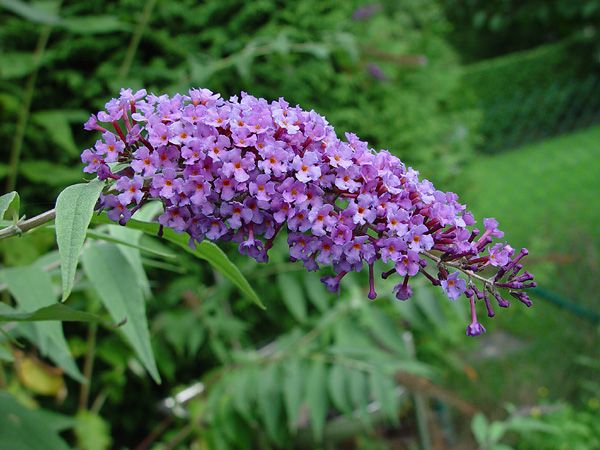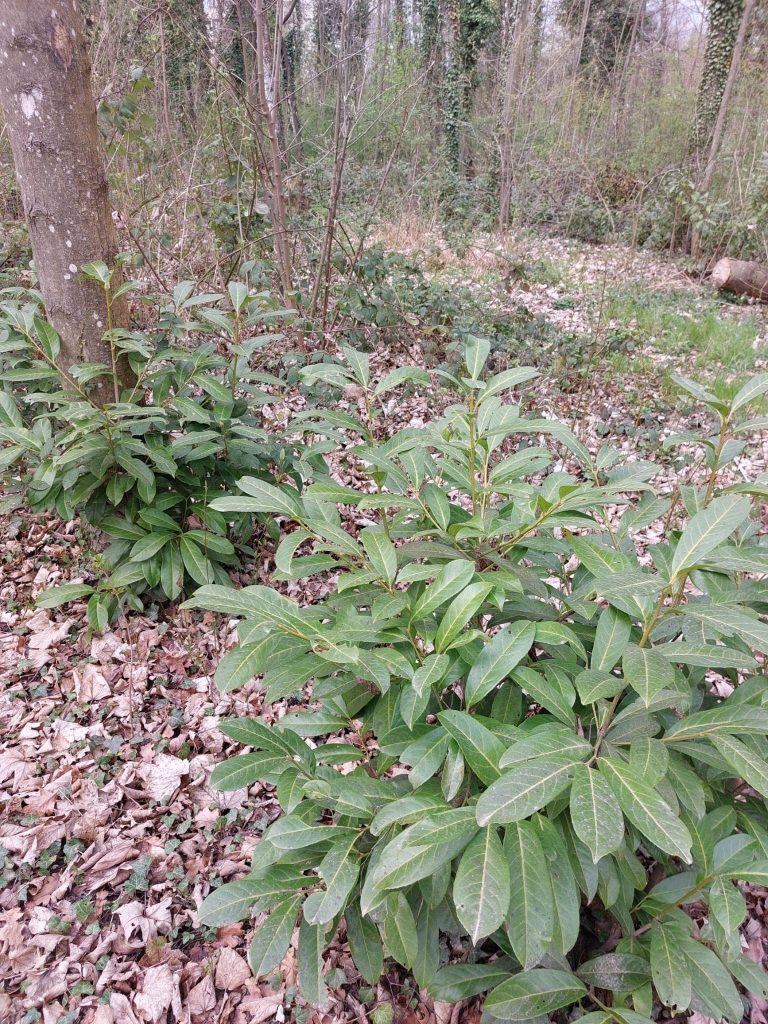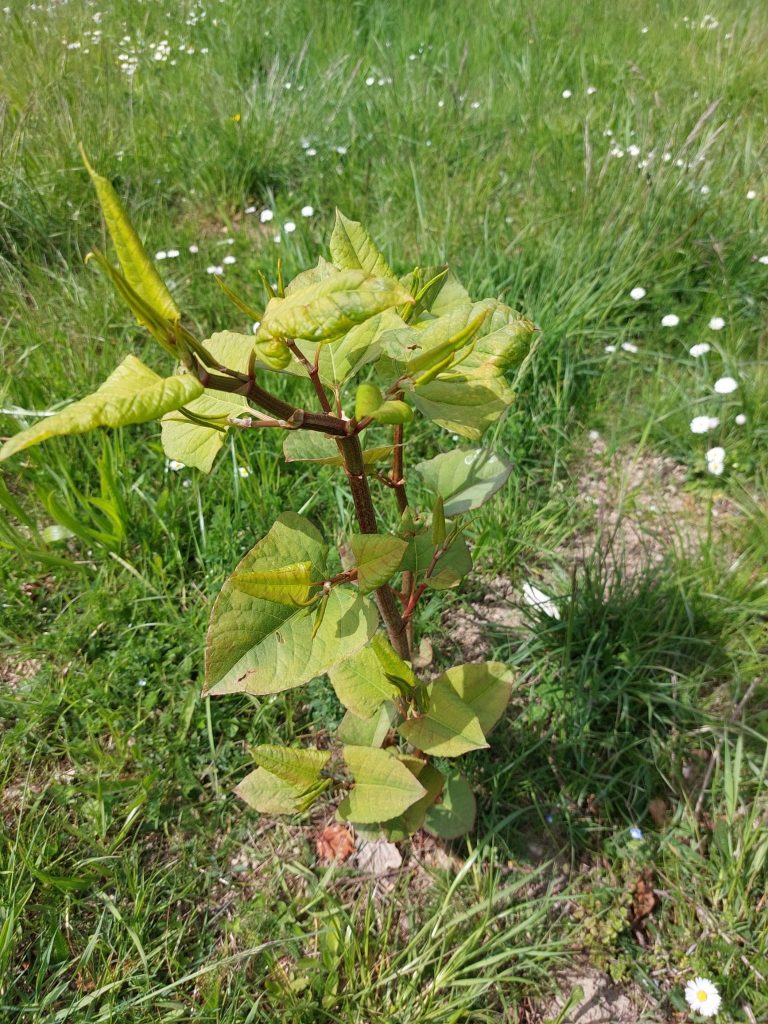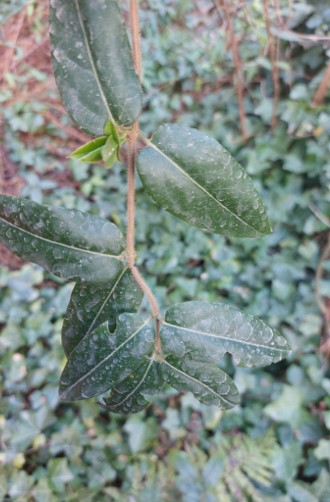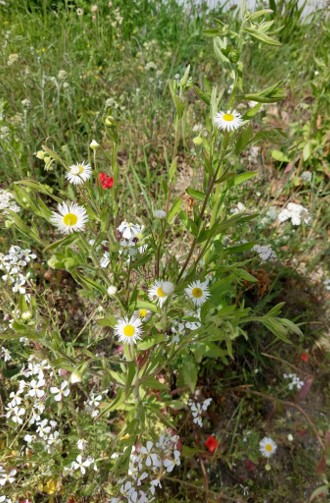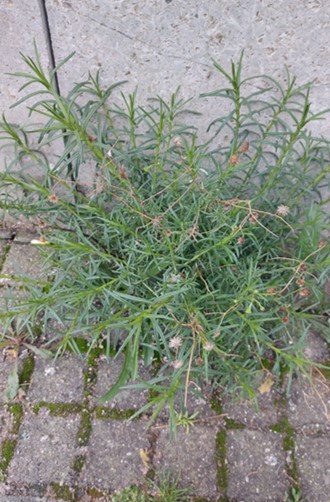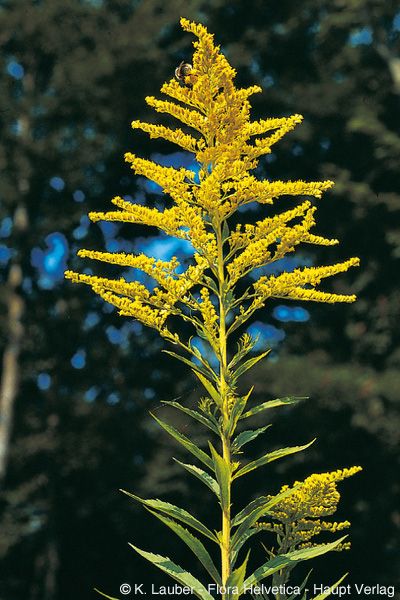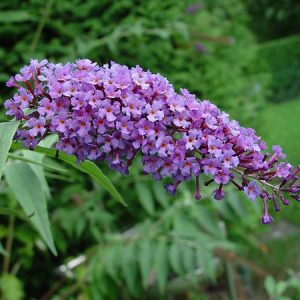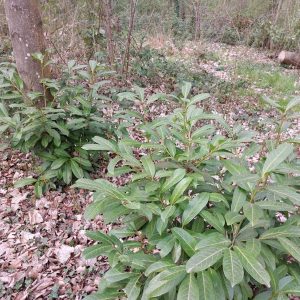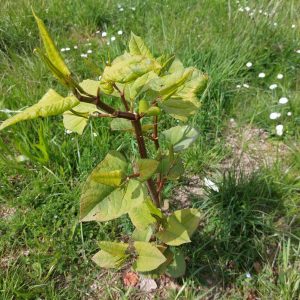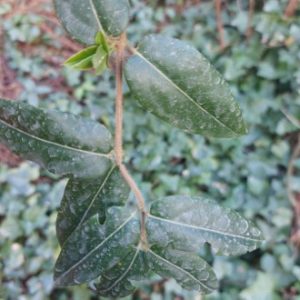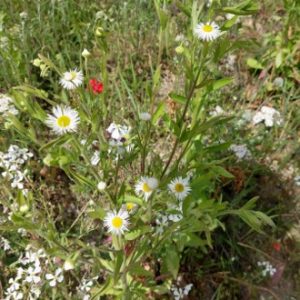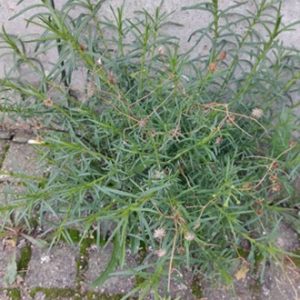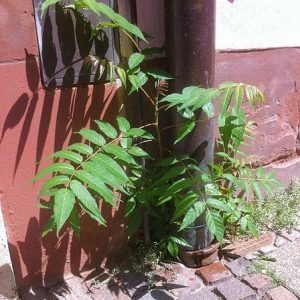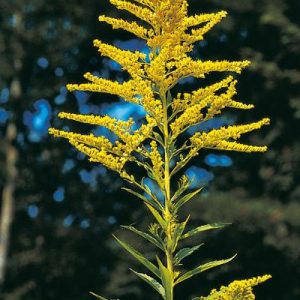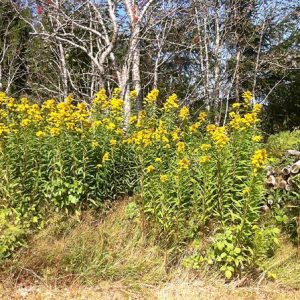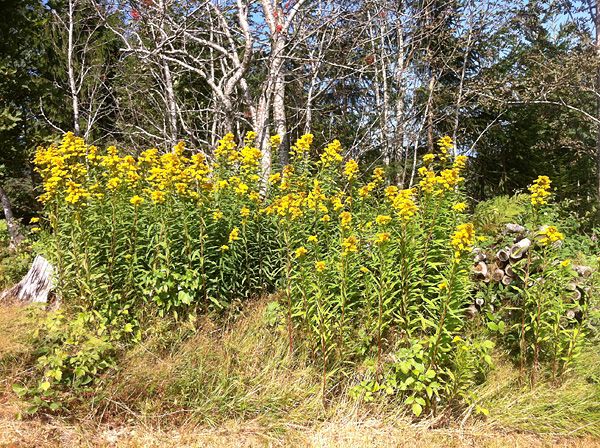
Invasive neophyte plants are considered the second most important cause of biodiversity decline worldwide. It is therefore important to fight against this phenomenon on the EPFL campus, which several of these species colonize.
What is an invasive neophyte species?
Invasive neophyte species (also called “invasive alien plants“) are defined by two terms:
- Neophytes: characterizes the indigeneity of a species. Neophytes are all the species that arrived from the 16th century onwards (Great Discoveries and beginning of intercontinental maritime exchanges) on a determined biogeographical territory (here Europe). Neophyte species are opposed to indigenous species.
- Invasive: characterizes the capacity of a species to colonize new territories rapidly to the detriment of native species and which can constitute a danger for human beings (sanitary, economic, security). Be careful, not all neophyte species are invasive.
Why fight against these species?
Invasive neophyte plants are considered as the second cause of the decline of biodiversity at the planetary level. Their high colonization potential is due to four factors in particular:
- The absence of natural regulators (parasites, diseases, fungi, fauna). Our native flora has co-evolved with a multitude of organisms and forms a fragile dynamic balance
- A strong competitive power (rapid growth, large ecological amplitude)
- A very high reproductive potential (high seed production, high germination power)
- The ability too to reproduce vegetatively, i.e. by making clones of the mother plant, without the need to produce seeds.
These different factors allow these invasive species to take over our native flora, leading to a decrease in the surfaces colonized by our species, breaking the fragile balance of our natural environments. This natural balance depends on the relationships between the different organisms, because each species needs resources. When resources change, new balances must be found. The decrease of our floristic biodiversity leads, in fine, to a stress on all the other levels of the food pyramid.
In addition to the impacts on biodiversity, invasive neophytes can have repercussions on health as well as on the economy. For example, Japanese knotweed (bank subsidence, erosion) for economic impacts or ailanthe (skin allergies, destabilization of buildings) for health impacts.
Finally, in terms of legal framework, Switzerland has committed to fight against these species by ratifying the Bern Convention (1982), the Rio de Janeiro Convention on Biological Diversity (1992) and the Nagoya Protocol in 2010. At the national level, the Federal Law on the Protection of Nature and Landscape (LPN; RS 451) has established a basis for the fight against invasive exotics.
The main species present on campus
In Switzerland, 56 species are listed as invasive neophytes, and 32 additional species are listed as potentially invasive neophytes (Infoflora 2021). We present here only the 8 most common species on the EPFL campus.
